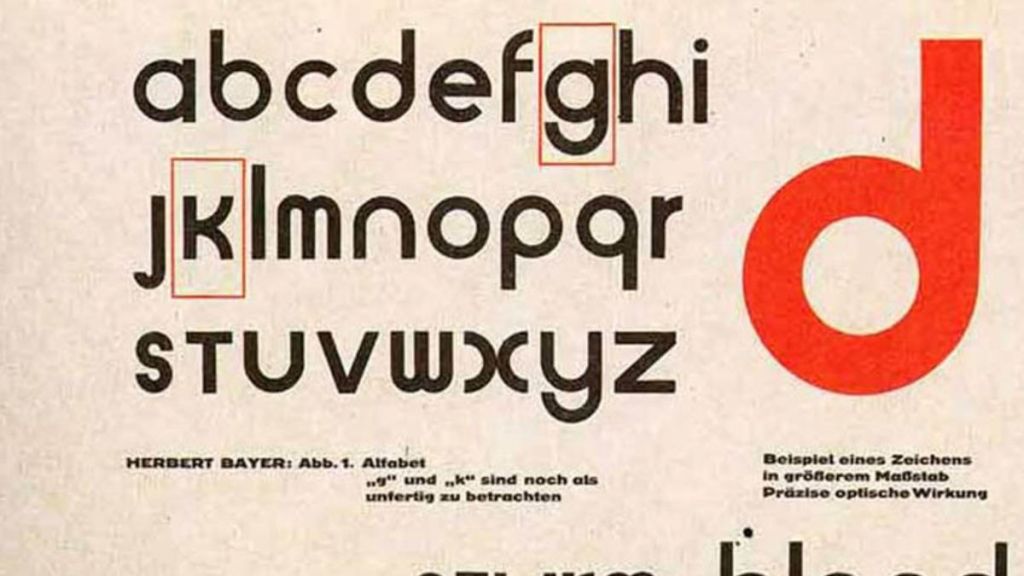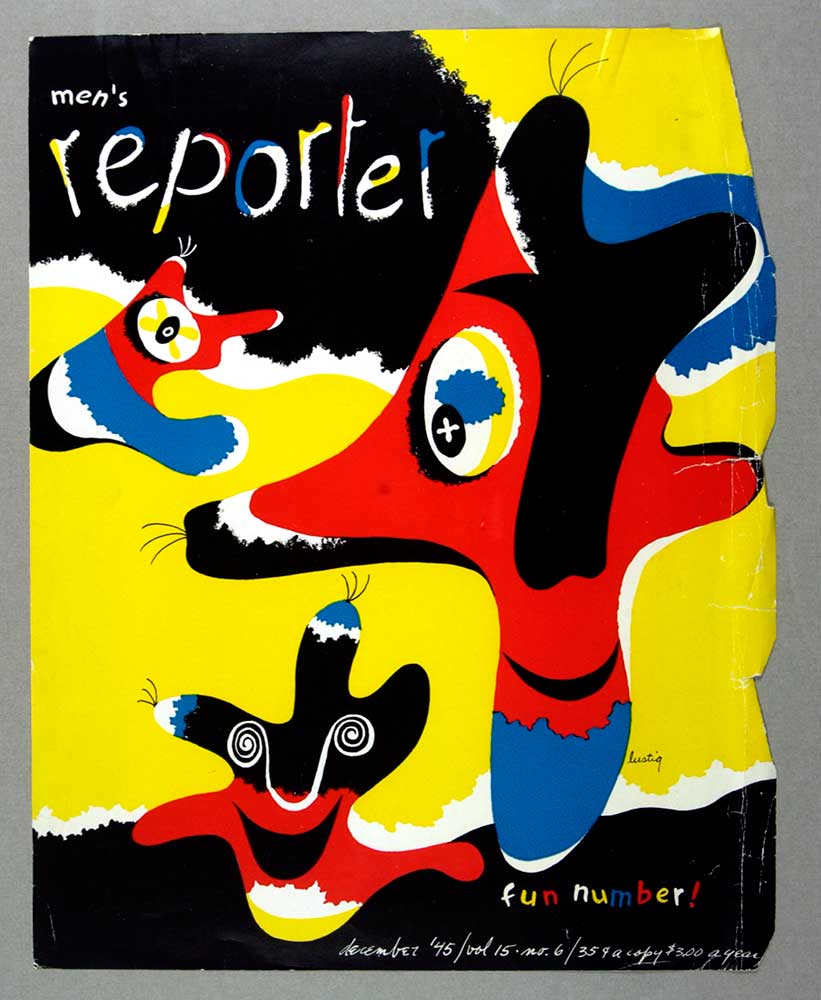Herbert Bayer (1900 – 1985) was a German-American painter, photographer, architect, designer, and sculptor. His unspecialised approach to art and design reflected his Bauhaus training, emphasising basic principles of visual communication. He emerged as a veritable one-person band of modernism, able to address form problems in practically any medium.
Education
Born in Haag, in the mountains of Austria, he worked as an apprentice architect and graphic designer in Linz and Darmstadt before arriving at the Bauhaus in 1921. For two years there, he studied painting with Kandinsky and typography. From 1925 to 1928, he headed the school’s typography and graphic design studio.
Embed from Getty ImagesBiography
He worked on commercial design and personal artistic projects in Berlin for the next ten years. In 1938 he moved to New York and became an American citizen six years later.
For twenty years, beginning in 1945, he masterminded Container Corporation of America’s innovative design program, including its Great Ideas of Western Man series. This program commissioned works from well-known artists.
In 1946, Bayer moved to Aspen, Colorado, to develop a recreation and culture centre. He was a consultant and architect at the Aspen Institute of Humanistic Studies. He founded the International Design Conference held there.
He died near Santa Barbara, California, in Montecito, where he had lived in his last years.
Varied Output
From commercial typography to murals, from exhibition design to environmental art, and buildings to drawings, Bayer’s extremely varied output defies simple generalisations. His work as a typographer, graphic designer, and photographer strongly influenced the development of modern advertising.
Embed from Getty ImagesNevertheless, the fine arts were always at the heart of his enterprise, and he never ceased to think of himself as a painter. Geometric abstractions predominated in his paintings of the 1920s and 1930s. Later, he investigated a variety of more personal modes. These included colouristic studies and works based on landscape.
Embed from Getty ImagesPhotography
After leaving the Bauhaus in 1928, he started taking photos. However, when he was a teacher at the school, it was a good place for the New Vision of photography. László Moholy-Nagy was passionate about promoting this vision through his students and the Bauhaus book Malerei, Photographie, Film (Painting, photography, film). Most of Bayer’s photographs were taken between 1928 and 1938 when he was a commercial artist in Berlin.
They show his wide range as an artist, with graphic views of buildings and carefully made montages. His photographs, particularly those from his years in Europe, stand among his most vivid contributions to the fine arts. Many reflect the period’s avant-garde search for identifiably modern angles of vision in straight photography. At the same time, his photomontages surrealistically manipulate reality, often with whimsical irony.

In 1930s Germany, Herbert Bayer faced political scrutiny that clashed with his Bauhaus-influenced Modernist design ethos. His work, centered on universality and form-function synthesis, ran counter to the National Socialist Party’s narrowing ideological constraints on art and design. Labeled as part of the “degenerate art” movement, Bayer found his professional freedoms increasingly stifled. This tension led him to emigrate to the United States. This marked a significant career shift and underscored the complex interplay between design and political activism.
Emigrated to the United States
Upon Alfred H. Barr Jr.’s request, Bayer immigrated to the United States in 1938 to implement his theories of display. He worked on the setup of the MoMA exhibition Bauhaus: 1919–28 (1938). When planning the exhibition Road to Victory (1942), Bayer worked closely with Steichen, the young department head of photography, to establish this function. This work would pave the way for Edward Steichen’s groundbreaking approach to photography display. For the balance of his career, Bayer worked as a graphic designer in America.
Sources
Herbert Bayer. Oxford Reference. Retrieved 25 Jan. 2021
More Graphic Designers
More design articles
Discover more from Encyclopedia of Design
Subscribe to get the latest posts sent to your email.






